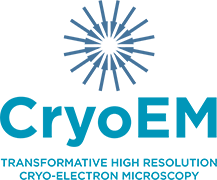Curriculum Development
Led by Professors Peter Shen and Janet Iwasa at the University of Utah, CryoEM 101 is a media-rich curriculum to augment users’ own hands-on training. The training material contains videos, animations, and interactive simulations that cover the major components of the cryo-EM workflow.
Led by Professor Grant Jensen at CalTech, this comprehensive online cryo-EM curriculum covers theory and practice of major cryo-EM modalities. The curriculum targets: expert users, including PIs teaching cryo-EM in courses, and naïve users. The course will provide additional resources including exam questions, review slides, and more.
EM-Learning.com is a companion to Getting Started in CryoEM. Led by Professor Grant Jensen (Caltech) and Dr. Matthijn Vos (Institute Pasteur), these videos demonstrate in real life the actual work of cryo-EM. Videos show sample preparation, safety, all the functions and knobs on typical modern microscopes, how to align and set up a cryo-EM, how to screen grids and finally how to set up data collection. The demonstrations are supported by additional theory videos. There are also a large number of test questions.
Led by Professors Wen Jiang and Victor Chen at Purdue University, CryoVR is a project established to create training tools to familiarize new users with cryo-EM equipment, such as the microscope and plunge-freezing instruments, through a free, safe, easily accessible, virtual environment.
Led by Professors Michael Cianfrocco at University of Michigan and Mark Herzik at University of California San Diego, CryoEDU is a project established to offer self-paced training tools in cryoEM/ET data interpretation and analysis on a cloud-based desktop environment.
Led by Professor Fred Sigworth at Yale University, Principles of CryoEM is an educational curriculum including video, software and an e-book that provides a rigorous treatment of the mathematical foundations of cryo-EM image processing and reconstruction. The goal of our instructional efforts is to ground students and researchers in the understanding of the principles and best-practice methods in the computational processing that leads to molecular structures.
